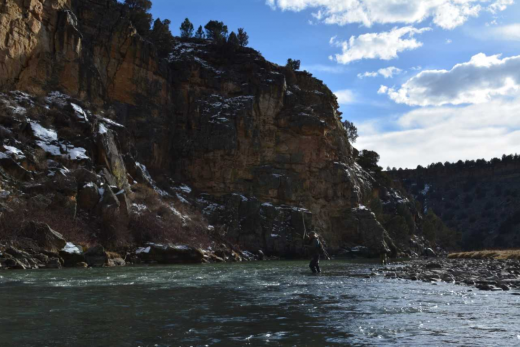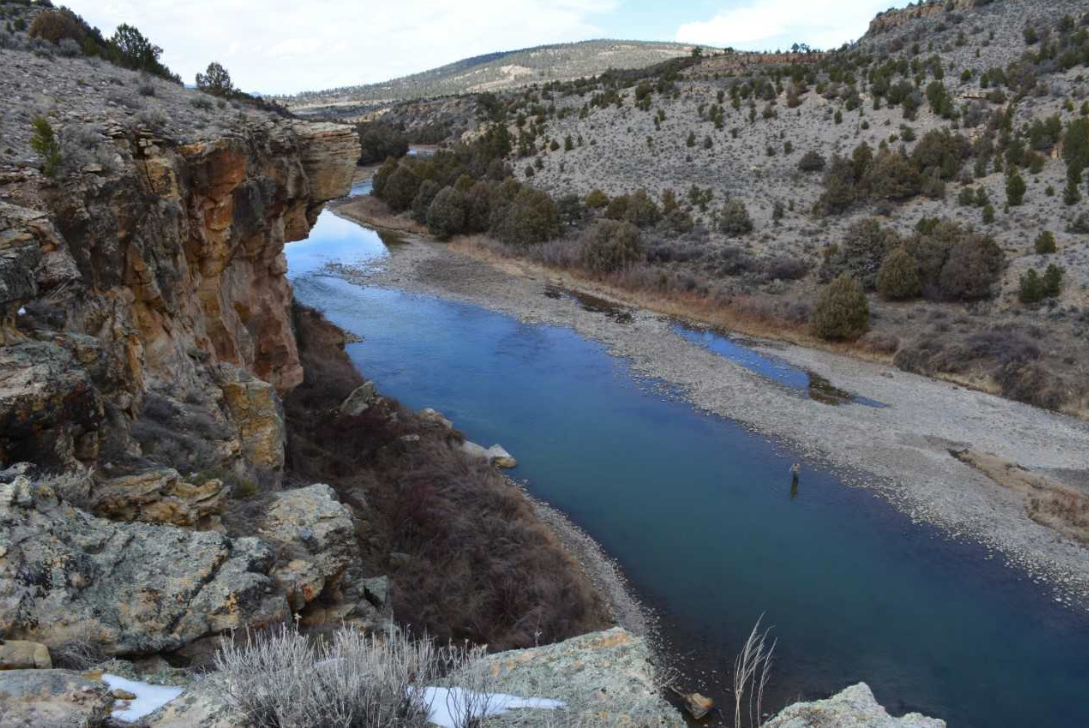By Toner Mitchell
I once wrote an article for a fly fishing mag about a stream that at least one person thought should be kept a secret. This man (in my experience, women generally wait until they know someone better before labeling them a term that rhymes with “mooshrag”) claimed that my article would attract hoards of people from other states to catch his fish. The fishery in question is in every fishing guidebook about my state, in several You Tube videos, and has been featured on every regional fly shop and outfitter’s menu for years. According to this person, however, if anything bad happened to this sweet stream—and sweet it definitely is— the blame would land squarely on me.
“Are we really still doing this?” I thought.
Of course we are, because we always have. Especially in prehistorical times, safekeeping one’s fishing grounds was simply a matter of survival. “This spot is my spot,” is deeply ingrained in us. “Its fish are my fish, until you prove otherwise and with a bigger knife/gun/dog.” Catch and release has softened this primitive truth, but the chances of eliminating it seem slim. The rules may have changed, but not the game.
As far as claiming dubious ownership of fishing spots, I’m as guilty as anyone. As a kid, the fly rod in my hand placed me among a teeny minority of anglers, a distinction I wore with the utmost conceit. I caught lots of fish on flies I made myself and rarely saw other people where I fished. My ego swelled with the notion that I was a pioneer; not only did I invent fly fishing, but the trout of the high desert backroads had seen no human before me. During high school, if a friend wanted to fish with me, I secured promises of silence with threats of no future fishing trips. I’m embarrassed to say I continued this gatekeeper act well into early adulthood. Along the way, I forgot how many fishing secrets I’d been given by the same friends I’d threatened. More important, I forgot the many times I encountered grandfathers at my spots, not to mention their recollections of their own grandfathers who first took them there.
But I remember now. And I’ve read enough to learn that – for gold, furs, trees, grass, meat, and sporting opportunities – much of the western United States has been shaved to the meager nub at least once. I now understand that having a place to oneself, though a beautiful feeling, is a fantasy, and one that dies hard like mine did. As my father might put it, “It’s one thing to be an idiot, quite another to be proud of it.”
The fishery that got me in trouble was logged, mined and all the while grazed. The hill slopes around it are so erosive it’s tempting to think that one could take a bathroom break and send bank silt to Mexico by sundown. Yet in spite of all the damage, the river produced a 20-pound state record brown trout and many monsters since, facts that did more to cause the fishery to appear on the radar than fall off it. As a Wild and Scenic River and rafting mecca, it’s popular with folks from around the west, many of whom are anglers. The worm-and-spinner gang consists mainly of families that have lived in New Mexico for centuries. Even so, the stream is rarely crowded. To be sure, there are more anglers at certain times than at others, but what else should one expect from a lunker brown trout fishery?
 In these times when our public lands are seemingly under constant threat, it’s important to acknowledge that the road leading to where we are is long, winding, and heavily populated, to a degree where none of us can know everyone with whom we’ve shared it. And while I believe there’s nothing wrong with keeping quiet about our favorite spots, I also think it prudent to manage our expectations. Some reality-based suggestions:
In these times when our public lands are seemingly under constant threat, it’s important to acknowledge that the road leading to where we are is long, winding, and heavily populated, to a degree where none of us can know everyone with whom we’ve shared it. And while I believe there’s nothing wrong with keeping quiet about our favorite spots, I also think it prudent to manage our expectations. Some reality-based suggestions:
-
The U.S. has a population of 330 million. When I started fly fishing, it was 250 million. New Mexico had 1million souls then. Now it has 2 million. If we want less-crowded streams, we need to reduce these numbers by a lot in a very short time. The violence involved will cause great pain and suffering, but the fishing in the aftermath will be awesome for the survivors.
-
A River Runs Through It caused fly fishing to become much more popular than it was before the movie came out. This popularity shows no signs of abating. We must accept that.
-
Those of us in real estate or the construction trades are contributing to the crowding of streams. We must accept that too.
-
Same if we work in the fly fishing industry or any tourism-related field.
-
Same if we contribute anything at all to the economy; our lives create opportunities, jobs and the need for recreation. Also, public fishing opportunities are ensured by tax and personal revenue generated by people who work and are, therefore, probably not swarming the streams as much as the voices in our heads say they are.
-
If we live in the West, we must understand that our favorite streams have been known for a long time as providers of recreational enjoyment. As fly anglers living in 2018, chances are good that we had very little to do with this.
-
Each of us is the crowd someone else wishes never showed up. In other words, everyone is as deserving of peace and solitude as we are.
-
If we don’t like seeing fishermen from other states on our favorite streams, we should tell them to go home while doing them the courtesy of not visiting their home waters either. Hopefully, our state won’t experience crippling drought or forest fires and has all the great hatches, scenic vistas, and fun towns we’ll ever want to visit. And may all of our present and future fishing buddies live where we do.
-
Our prized fisheries are threatened by climate change, pollution and the public land transfer movement. If we think other fishermen are the biggest threat to our fishing, it’s time to reassess. At some point, hopefully soon, we’ll appreciate other anglers as friends instead of enemies. And friends share with friends.
Except, of course, for that stream nobody knows about.
Toner Mitchell is TU’s water and habitat coordinator for New Mexico. He lives and works in Santa Fe.



